
Summer Guides
- /
- Gardening Guides
- /
- Summer
Get Ready For Summer Now!
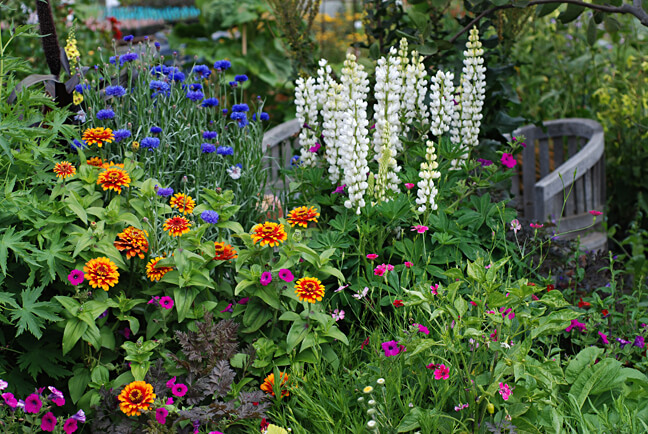
Ahhh, the joy of the Summer Garden! The deliciously long evenings, butterflies galore, exotic tropical scents, happy Sunflowers, Dahlias, Lupines & many of the showiest bloomers of all! And to make it more tempting, June & July are the two months here at the nursery when more new & exciting plant varieties are available than any other time of the year! Rare tropicals, loads of Salvias, South African perennials & shrubs & much, much more.
A garden can enthrall us for more than just one season...
When I first started gardening, Spring was the THING! That April gardener’s sap would rise in my body – compelling me towards the nearest nursery – to find floral expressions of my enthusiasm & excitement in the freshness & newness that is Spring. But like so many other newish gardeners – Spring was the only thing. I would work so hard creating an exuberant Springtime extravaganza & I’d bask in the excitement. As the end of May rolled around, my charming Spring bloomers would fade, the weeds creeping in to replace them. By June, my garden no longer felt inviting. I’d begin to avoid it & by mid-Summer it was just plain ugly & I knew it was too late to do anything about it. By Fall, it was a disaster, choked with weeds, neglected treasures dried up & perennials overgrown & starving. And so, by the next Spring I would feel frustrated, feeling every year I was starting my garden over from scratch. Most of all, I’d miss the joy of a Summer garden.
A Summer garden is sensual ...
With a little maintenance & planting, your Summer garden can be the most inviting & sensual garden of all. And with our long days, there’s lots more hours to enjoy it! You can easily create a lovely garden space to enjoy that old-fashioned idea of Summer leisure time. Some of my favorite garden memories are of laying all day in a lounge chair, reading a good book, surrounded by flowers gently moving in the breeze.
Or sunbathing on a towel, achieving perfect garden trance-like tranquility, occasionally lifting an eyelid to take in the amazing insect world around me. Surreal Monarch butterfly caterpillars munching away on a nearby milkweeds, soon to shed their skins to reveal extraordinary, jeweled, turquoise chrysalises. Bumblebees buzzing, their legs plumped with golden pollen. A hummingbird & dragonfly caught in an aerial stand-off a few feet above my head. Sights, sounds & scents of Mother Nature’s magic when we’re still enough to notice.
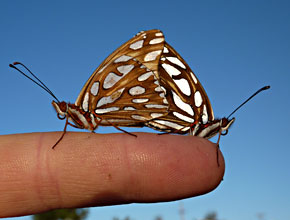
Bees, Butterflies and Birds love Summer, too! View more Wildlife Friendly Plants
Prepare for a sensual Summer garden now!
If you’ve already enjoyed a wonderful Spring garden it’s easy to make your Summer dreams come true! Here’s what to do:
-
Pull weeds now!!! You shall not dismiss it! Remember every weed you let go to seed can equal 100 weeds by mid Summer. Yikes!
-
Pull out faded Spring blooming annuals now. Save any dried seeds or seed pods for Fall or early Spring planting.
-
Turn over the soil in the empty spaces a bit to prepare for planting. It loosens & aerates the soil, making it nice for a new plant’s roots to grow in.
-
Cut back Spring blooming perennials like Columbines, perennial Foxgloves, Penstemons & Delphiniums.Here in northern coastal California, Delphiniums & some Columbines will re-bloom during Summer. Cut Columbines to the ground & Delphiniums to about 4” tall. New growth will sprout up & even if they don’t bloom, the foliage will look healthy & pretty in your garden.
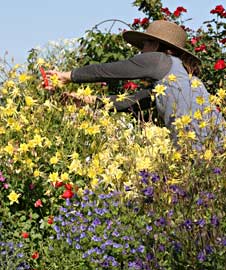
Deadhead and cut back Spring Blooming Perennials
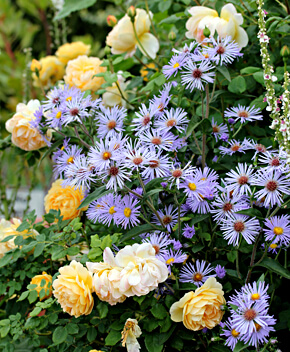
Aster 'Skyscraper' Wildlife Friendly Plants
-
Add a bit of compost If you've got an "abundantly planted" garden like me, with many plants crowded together, those plants have been using up nutrients all Spring. Adding a 1" layer of good quality compost around established plantings (including shrubs), as well as your new plantings will really give them a boost and keep them much more healthy over the rest of the season. It really makes a big difference and if you don't make your own compost, try to buy it at a landscaper's supply or good independent nursery rather than the "box store" as these places often carry poor quality "compost" with a high ratio of wood products.
-
Get ready to plant. See my list of favorite, easy Summer bloomers at the end of this article. Do be aware the care info is based on what we know from our experience at the nursery & what folks have told us. I know you folks in hotter areas (like Sacramento) tend to plant most Summer bloomers in part sun to part shade. Also, plants listed as drought tolerant do need some water for a while until they become established.
-
Planting. Always try to buy your plants small. Really. The smaller the better as long as the roots reach the bottom of the pot. Don’t buy plants in bloom unless it’s a party-type emergency. Plants already blooming in a container are stunted, have used up some of their bloom time & will never put on the show a small, non- blooming plant will. The smaller plant will grow nice, fat, roots, grow much faster, bloom much longer & will be much healthier. Resist the blooming plant! Just like the books say, it does look better when you plant in groups of 3-5-7 etc. If you’re on a budget, remember one blooming annual this year will give you 10 or more self-sown seedlings next year. A highlight or specimen plant may be planted singly, of courseTo stretch out the bloom season when planting a group of one type of plant, I often plant several different sizes; from small seedlings to ones almost in bud. I place the taller ones so they don’t block the light to the smaller ones. Remove older plants as they fade so the smaller ones can put on a optimal show.When planting a perennial that will take some months to bloom, I plant shorter, fast growing annuals around it to fill in space. German Catchfly is great for this purpose. Make sure they don't block all the light to the perennial or the perennial will rot.Again, just like the books say, it's good to include vertical plants to add height to your garden. They lift the eye, give a multi-layered look & definitely eliminate the "gas station garden" look. When in doubt, Verbascums are a fast & carefree choice. Besides, they reseed easily & provide free vertical accents every year.Also, perennial Verbascums will continuously form new flower spikes if spent ones are cut back. Sunflowers, Verbena bonariensis & Polygonum orientale are a few more of my favorite vertical accent plants
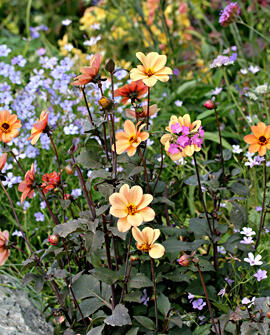
Luciously dark foliaged Dahlia 'Bishop's Children' adds contrast to the Summer border.
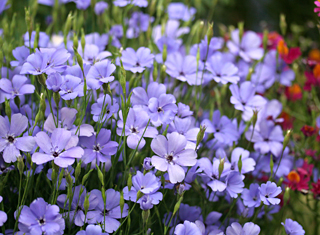
Blue German Catchfly mixes well with slower growing perennials.
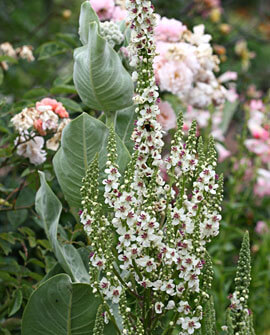
Use Verbascums and other spikers to add verticality to the garden
-
Don’t forget the snail bait! Even if you were religious about putting down snail bait in Spring, you may still have some snails lurking about. Your new plants will need protection. Here at the nursery, I use Sluggo. It works better than any other snail bait I’ve tried & it’s non-toxic too!
-
Keep an eye on watering. You don’t want all your good work to going "poof" during one of our hot spells. If you go on vacation, set up a watering system or hire a neighborhood teenager to come over & water
-
Time to luxuriate! Pull out a lounge chair, grab a great book & give yourself some “special time” in your beautiful Summer garden. You deserve it!

Happy Gardening!
Annie
